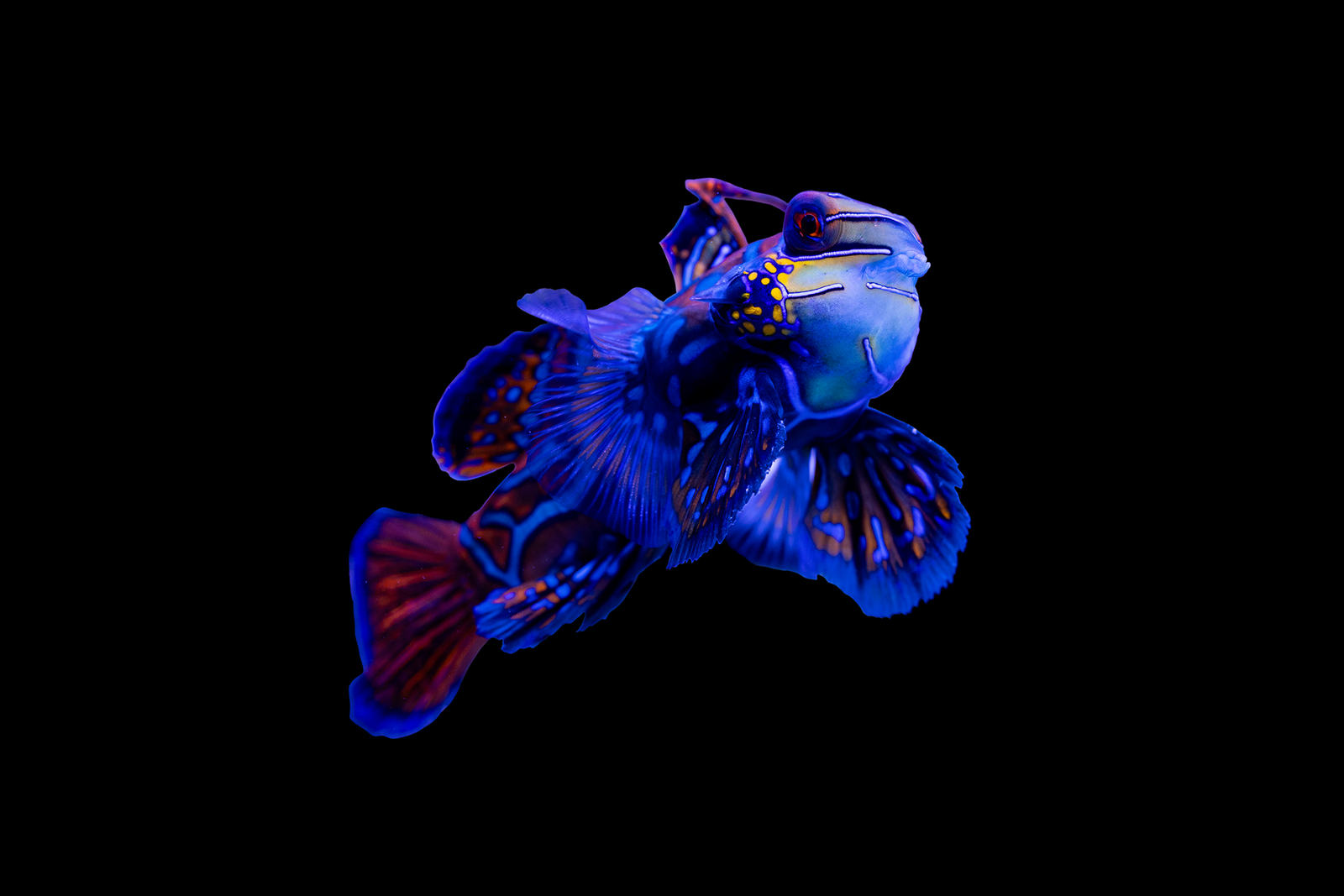If there’s a living gem in the ocean, it’s the Blue Mandarin Fish (Synchiropus splendidus). With its psychedelic colors and graceful movements, this tiny reef dweller captivates anyone lucky enough to spot it. Often found darting through the coral rubble of the Indo-Pacific, the Blue Mandarin Fish is a favorite among divers, photographers, and saltwater aquarium enthusiasts.
A Splash of Color
The Blue Mandarin Fish, sometimes simply called the Mandarin fish, stands out with its vibrant palette of electric blue, orange, green, and yellow. Its swirling, painterly patterns look almost too perfect to be real—more like a creature from a fantasy world than a natural reef inhabitant. Interestingly, the vivid blue coloration isn’t from pigment cells but from light-reflecting cells called iridophores, which refract light to create that signature shimmering effect.
Natural Habitat
Blue Mandarins are native to the warm coastal waters of the western Pacific Ocean, particularly around the Philippines, Indonesia, and parts of Australia. They prefer shallow lagoons and protected reefs, where they can hide among rocks and coral to avoid predators. Despite their showy appearance, they’re surprisingly shy and tend to stay near the seabed, weaving in and out of the reef like living brush strokes.
Diet and Behavior
Mandarin fish are carnivorous micro-predators. They feed primarily on tiny crustaceans, copepods, and other microscopic invertebrates. They have small mouths and a specialized hunting behavior, often picking food off the substrate with a quick peck.
One reason they’re considered challenging to keep in home aquariums is their highly specialized diet. Many individuals will only eat live food, making them unsuitable for beginner aquarists unless kept in a mature, well-established tank rich in natural microfauna and ample copepods in the water column.
Courtship and Reproduction
Watching Blue Mandarins court and mate is a rare and beautiful sight. At dusk, males and females rise together from the reef in a synchronized dance, releasing eggs and sperm into the water column in a brief but elegant ritual. This behavior has become popular among night divers in places like the Philippines, where operators run special twilight dives to observe the spectacle.
A Natural Defense
You might wonder how such a brightly colored, slow-moving fish survives in a predator-filled ocean. The answer lies in its toxic mucus. Unlike many fish that rely on scales for protection, the Blue Mandarin has a slimy, bitter-tasting coating that deters predators. This, combined with its cryptic behavior and preference for hiding, makes it less vulnerable than its flashy appearance might suggest. The toxins however are not hazardous to humans.
Aquarium Considerations
The Blue Mandarin Fish is highly sought after in the saltwater aquarium trade, but keeping one healthy requires advanced care:
- Tank Requirements: A mature reef tank of at least 90 gallons with lots of live rock to hide in and hunt.
- Feeding: A constant supply of copepods of different sizes, Tigriopus for adults and Tisbe for juveniles.
- Tank Mates: Peaceful companions; avoid aggressive or fast-feeding species, you may pair: multiple females together, a mating pair of one male and one female ,or one male and multiple females.
For aquarists willing to put in the effort, the Mandarin is one of the most rewarding fish to observe.
Final Thoughts
The Blue Mandarin Reef Fish is a true marvel of the marine world. Its hypnotic beauty, delicate nature, and unique behaviors make it a favorite among marine life lovers. Whether you encounter one while diving a tropical reef or marvel at its elegance in a home aquarium, this species is a powerful reminder of the ocean’s wonders—and the importance of preserving its fragile ecosystems.
Suppliers:
New Dawn Aquaculture places special emphasis on aqua-cultured fish, as we believe it is a sustainable future for the aquaculture industry and to help maintain wild populations as populations of fish and coral alike continue to struggle. One of the providers we work closely with is Biota, who breed and supply our Mandarins.





